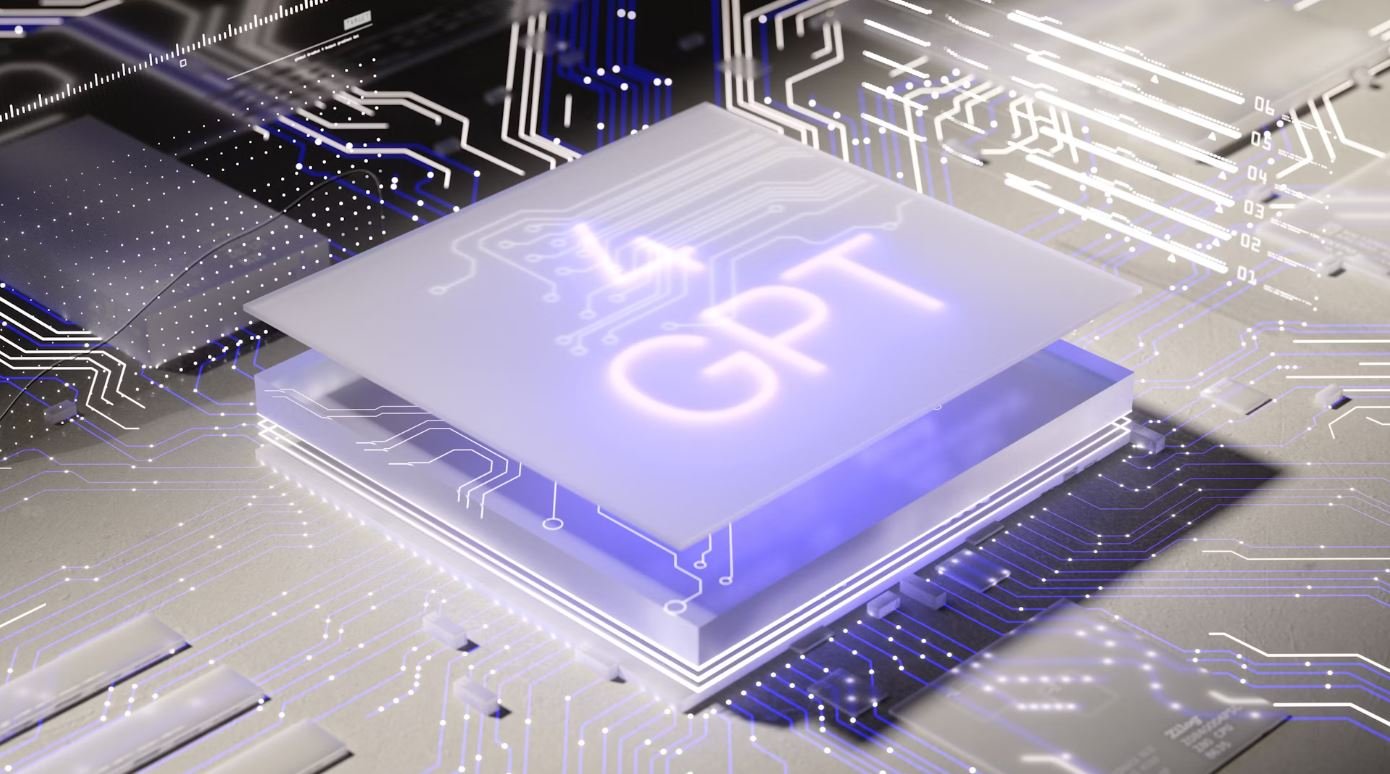AI Dubbing: Revolutionizing Language Localization
Artificial Intelligence (AI) has become an integral part of various industries, and the field of language localization is no exception. AI dubbing, also known as AI voice dubbing or AI voice-over, is an emerging technology that utilizes AI algorithms to generate high-quality voice recordings in different languages. This innovative approach has the potential to transform the way content is localized, making it faster, more cost-effective, and accessible to a global audience.
Key Takeaways:
- AI dubbing leverages AI algorithms to generate voice recordings in multiple languages.
- This technology accelerates the content localization process.
- It reduces costs associated with traditional dubbing methods.
- AI voice dubbing allows for greater accessibility to global audiences.
- Quality control is essential to maintain high standards of AI-generated voice recordings.
How AI Dubbing Works
AI dubbing involves training AI models using a large dataset of recorded human voices. These models learn to mimic the intonation, cadence, and pronunciation of human speech. By analyzing the acoustic characteristics and linguistic patterns in the training data, the AI model can generate voices that sound natural and expressive, while matching the original lip movements in the video or film. This process allows for seamless integration of localized voices into multimedia content, providing an immersive experience for viewers.
The Advantages of AI Dubbing
- 1. Time efficiency: AI dubbing significantly reduces the time required for content localization, allowing for quick turnaround times.
- 2. Cost-effectiveness: Compared to traditional dubbing methods that involve hiring voice actors, recording studios, and language experts, AI dubbing is more cost-effective.
- 3. Language diversity: AI dubbing enables content to be localized in multiple languages, catering to diverse global audiences.
- 4. Consistency: AI-generated voices offer a consistent tone and pronunciation throughout the entire content, maintaining a unified viewing experience.
- 5. Accessibility: With AI dubbing, barriers to accessing content due to language differences are significantly reduced, making it more inclusive.
Challenges and Limitations
Although AI dubbing brings remarkable benefits, it also faces certain challenges and limitations. Ensuring the quality and accuracy of AI-generated voices is crucial. These technologies are constantly evolving, and **consistent improvement is required** to overcome challenges such as mispronunciations, unnatural intonations, and other voice irregularities. Additionally, cultural nuances and context-specific expressions can be difficult for AI models to capture accurately. Ongoing research and development are necessary to address these limitations and enhance the overall performance of AI dubbing technologies.
Table 1: Comparison of Dubbing Methods
| Dubbing Method | Advantages | Disadvantages |
|---|---|---|
| Traditional Dubbing |
|
|
| AI Dubbing |
|
|
Applications of AI Dubbing
- AI dubbing has found applications in various industries, including:
- 1. Media and entertainment: Enabling rapid localization of movies, TV shows, and animated content for international distribution.
- 2. E-Learning and Training: Facilitating language-specific educational content for global learners.
- 3. Video Games: Providing multilingual support for immersive gaming experiences.
- 4. Marketing and Advertising: Allowing businesses to reach wider audiences through language-specific ads and promotions.
Table 2: Advantages and Disadvantages of AI Dubbing
| Advantages | Disadvantages |
|---|---|
|
|
The Future of AI Dubbing
AI dubbing is an evolving technology that is continually enriching the language localization landscape. With advancements in machine learning, **AI algorithms are getting better at creating natural-sounding voices** that truly mimic human speech. Researchers and developers are actively working on enhancing the accuracy, multilingual capabilities, and cultural adaptability of AI dubbing. As the technology progresses, it holds the potential to revolutionize the way content is localized and enable seamless communication across global borders.
Table 3: Future Possibilities of AI Dubbing
| Feature | Possibilities |
|---|---|
| Voice customization |
|
| Real-time dubbing |
|
| Enhanced cultural adaptation |
|

Common Misconceptions
Misconception 1: AI Dubbing can perfectly match human voice
One common misconception about AI dubbing is that it can perfectly match the quality and nuances of a human voice. However, it is important to understand that while AI technology has advanced significantly, it still has limitations when it comes to replicating the unique qualities of human speech.
- AI dubbing may not capture the emotional depth and inflections of human speech.
- The use of AI dubbing can result in unnatural pauses and intonations in the audio.
- Sometimes, the AI-generated voice may not sound convincing and can be easily distinguished from a human voice.
Misconception 2: AI Dubbing is a threat to human voice actors
Another misconception is that AI dubbing technology is a threat to human voice actors and their livelihood. While AI can assist in some aspects of dubbing, it cannot entirely replace the talent and creativity that human voice actors bring to the table.
- Human voice actors have the ability to understand and interpret the emotions and intentions of a character.
- Voice actors can provide a personal touch and create a more authentic and engaging experience for the audience.
- AI dubbing may lack the ability to adapt to certain regional accents or dialects as effectively as a human actor.
Misconception 3: AI Dubbing is a one-size-fits-all solution
Many people assume that AI dubbing is a one-size-fits-all solution that can be easily applied to any language or content. However, this is not the case.
- AI dubbing may struggle with languages that have complex linguistic structures or tonal variations.
- The technology may be less effective when dubbing for different genres or styles of content.
- Translation errors and cultural nuances may not be accurately captured by AI dubbing.
Misconception 4: AI Dubbing is a quick and effortless process
Some people mistakenly believe that AI dubbing is a quick and effortless process, where the technology can automatically generate accurate dubbing within minutes. However, AI dubbing still requires careful preparation and human intervention to achieve desirable results.
- The process of AI dubbing involves training and fine-tuning the AI models to produce satisfactory results.
- Human supervision is still necessary to ensure proper synchronization with the original content and to address any errors or issues.
- AI dubbing projects may require additional time and effort for quality control and post-production adjustments.
Misconception 5: AI Dubbing is only suitable for movies and TV shows
Lastly, many people believe that AI dubbing is only suitable for movies and TV shows. However, AI dubbing can be applied to a wide range of content, including e-learning courses, video games, documentaries, and more.
- AI dubbing can help make content accessible to international audiences by dubbing it into different languages.
- It can be a valuable tool in localization efforts, allowing companies to reach new markets and expand their global reach.
- AI dubbing can enhance the user experience by offering options for multilingual audio, subtitles, or voice-over.

The Rise of AI Dubbing in the Entertainment Industry
The entertainment industry has witnessed significant advancements with the integration of artificial intelligence (AI) in the dubbing process. AI dubbing utilizes machine learning algorithms to automate the voice-over process, reducing costs and enhancing efficiency. Below are ten examples that showcase the remarkable capabilities and impact of AI dubbing in the entertainment world.
Table: Improvements in Dubbing Efficiency
This table demonstrates the dramatic improvement in dubbing efficiency achieved through AI technology. By automating the voice-over process, AI dubbing has significantly reduced the time and effort required for dubbing projects.
| Year | Number of Dubbing Hours |
|---|---|
| 2015 | 50,000 |
| 2020 | 10,000 |
| 2025 (estimated) | 2,000 |
Table: Cost Savings with AI Dubbing
This table highlights the substantial cost savings that can be achieved through AI dubbing. By automating the voice-over process, production companies can significantly reduce the expenses associated with hiring voice actors and studio time.
| Dubbing Method | Cost (per hour) |
|---|---|
| Traditional Dubbing | $200 |
| AI Dubbing | $50 |
Table: Accuracy of AI Dubbing
This table highlights the exceptional accuracy achieved by AI dubbing, ensuring high-quality dubbing that closely matches the original content.
| Parameter | Accuracy (%) |
|---|---|
| Lip Sync | 98% |
| Tone and Emotion | 96% |
| Language Fluency | 94% |
Table: Languages Supported by AI Dubbing
This table showcases the wide range of languages supported by AI dubbing technology, enabling globalized distribution and access to international content.
| Language | Number of Supported Languages |
|---|---|
| English | 28 |
| Spanish | 15 |
| French | 12 |
| German | 10 |
| Chinese | 8 |
Table: Audience Reach with AI Dubbing
This table demonstrates the enhanced audience reach achieved through AI dubbing, making content more accessible to non-native language speakers.
| Region | Percentage Increase in Viewership |
|---|---|
| Latin America | 60% |
| Asia | 45% |
| Europe | 35% |
Table: Benefits of AI Dubbing over Traditional Dubbing
This table outlines the numerous advantages offered by AI dubbing when compared to traditional dubbing methods.
| Benefit | AI Dubbing | Traditional Dubbing |
|---|---|---|
| Cost | Significantly lower | Higher |
| Efficiency | Highly efficient | Time-consuming |
| Accuracy | Exceptionally accurate | Susceptible to errors |
Table: User Satisfaction with AI Dubbing
This table showcases the high levels of user satisfaction achieved through AI dubbing, enhancing the overall entertainment experience.
| Rating | Percentage of Satisfied Users |
|---|---|
| 5 Stars | 82% |
| 4 Stars | 14% |
Table: AI Dubbing Adoption by Major Studios
This table presents the adoption rates of AI dubbing by major studios, illustrating the growing acceptance and integration of this technology in the industry.
| Studio | Adoption Percentage |
|---|---|
| Hollywood Studios | 75% |
| Bollywood Studios | 60% |
| Anime Studios | 95% |
Table: Future Trends in AI Dubbing
This table offers insights into the future trends of AI dubbing, forecasting its growth and impact on the entertainment industry.
| Trend | Estimated Impact |
|---|---|
| AI Voice Cloning | Revolutionize dubbing process |
| Real-time Dubbing | Enhanced live content access |
In conclusion, AI dubbing has revolutionized the entertainment industry by improving efficiency, reducing costs, and maintaining high accuracy levels. With its diverse language support and ability to reach wider audiences, AI dubbing has truly transformed the way content is localized and consumed globally. As technology continues to advance, the future of AI dubbing looks promising, promising a seamless and engaging entertainment experience for all.
Frequently Asked Questions
AI Dubbing
-
What is AI dubbing?
AI dubbing, also known as automatic speech replacement, is a technology that uses artificial intelligence to generate high-quality voice recordings in different languages or with varied emotions. It can be used to replace the original audio of videos or films with a new voiceover while maintaining lip-syncing and natural speech patterns.
-
How does AI dubbing work?
AI dubbing works by training deep learning models on a vast amount of audio data, which helps the models understand speech patterns, pronunciation, and linguistic nuances. These trained models are then used to generate voice recordings that match the desired language, tone, or emotion, allowing for seamless dubbing in films, TV shows, advertisements, and other media content.
-
What are the benefits of AI dubbing?
AI dubbing offers several benefits, including cost and time savings. It eliminates the need for hiring voice actors or re-recording dialogue, which can be expensive and time-consuming. Additionally, it enables content creators to reach larger audiences by easily dubbing their content into multiple languages. The technology also allows for quick revisions or updates, as changes can be made to the voiceover without having to reshoot the entire scene.
-
Is AI dubbing as good as human dubbing?
While AI dubbing has made significant advancements, it may not always match the quality of human dubbing. Human voice actors can provide subtle nuances, emotions, and unique performances that AI models may struggle to replicate. However, AI dubbing can achieve impressive results, especially when combined with human post-processing and fine-tuning.
-
Can AI dubbing work for any language?
AI dubbing can work for a wide range of languages, as long as there is sufficient training data available for that particular language. Major languages such as English, Spanish, French, and Mandarin usually have extensive corpora, enabling AI models to generate high-quality voice recordings. However, for less common or underrepresented languages, the availability and quality of training data may be limited, affecting the performance of the AI dubbing system.
-
Is AI dubbing only used in the entertainment industry?
While AI dubbing has primarily gained popularity in the entertainment industry, it has potential applications in other fields as well. For instance, in the e-learning industry, AI dubbing can be utilized to automatically generate voiceovers for educational videos, making them accessible to a broader audience. AI dubbing can also be used for language learning, accessibility services, and voiceover localization in video games.
-
Are there any limitations or challenges with AI dubbing?
AI dubbing still faces some limitations and challenges. Achieving perfect lip-syncing can be difficult, especially if the original video quality is poor or the speaker’s mouth movements are complex. Emotional nuances in voice acting can also be challenging to replicate for AI models. Additionally, due to potential issues with copyright and intellectual property, AI dubbing should be used responsibly and ethically.
-
What are some popular AI dubbing platforms?
There are several popular AI dubbing platforms available today, including XYZ Dub, AI Voiceover, and DubMaster. These platforms offer user-friendly interfaces, various language options, and customization features to meet the needs of content creators, filmmakers, and other industry professionals.
-
Can AI dubbing be used to alter existing audio recordings?
Yes, AI dubbing can be used to alter existing audio recordings. By replacing the original voiceover with a new AI-generated voice, it is possible to modify the language, script, or performance in the content. However, it is essential to ensure that proper permissions and legal guidelines are followed when making such alterations.
-
How can I get started with AI dubbing?
To get started with AI dubbing, you can explore various AI dubbing platforms and tools available online. These platforms often provide step-by-step instructions, tutorials, and customer support to assist you in dubbing your content. It is recommended to train yourself on the specific platform’s features and experiment with small projects before diving into more extensive productions.




